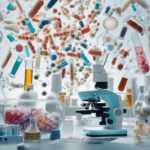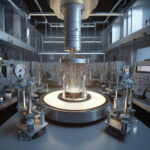Groundbreaking Imaging Tech Maps Elements in Frozen Bio-particles with Precision
Cryo-transmission electron microscopy (cryo-TEM) has transformed the way scientists study biological and organic materials. Flash-freezing samples in their native state allows for the visualization of structures at near-atomic resolution, providing valuable insights into the intricate world of bio-particles.
This cutting-edge imaging technology enables researchers to map elements within frozen bio-particles with unprecedented precision. By capturing images of samples at cryogenic temperatures, cryo-TEM preserves the integrity of delicate structures that would otherwise be damaged or altered during traditional sample preparation methods.
One of the key advantages of cryo-TEM is its ability to capture dynamic processes in real-time. Unlike conventional electron microscopy techniques that require samples to be stained or fixed, cryo-TEM allows scientists to observe biological samples in their natural state, providing a more accurate representation of biological processes.
The high-resolution images produced by cryo-TEM have led to groundbreaking discoveries in various fields, including structural biology, virology, and materials science. Researchers can now study the intricate details of viruses, proteins, and other biological molecules with unprecedented clarity, opening up new possibilities for drug development and disease treatment.
In addition to its applications in biological research, cryo-TEM is also being used to study complex organic materials such as nanoparticles, polymers, and catalysts. By visualizing the atomic structure of these materials, scientists can gain a better understanding of their properties and behavior, leading to the development of new and improved technologies.
The impact of cryo-TEM extends beyond the scientific community, with potential applications in industry and healthcare. For example, the ability to accurately map the elemental composition of bio-particles could revolutionize drug delivery systems, leading to more targeted and effective treatments for a wide range of diseases.
As technology continues to advance, the capabilities of cryo-TEM are expected to grow even further. With ongoing developments in imaging software, hardware, and sample preparation techniques, researchers can look forward to even higher resolution images and more detailed insights into the microcosm of bio-particles.
In conclusion, cryo-transmission electron microscopy is a game-changer in the field of imaging technology, offering unprecedented precision in mapping elements within frozen bio-particles. By combining cutting-edge imaging techniques with cryogenic sample preparation, scientists are pushing the boundaries of what is possible in the study of biological and organic materials.
This groundbreaking technology holds immense promise for the future of research and innovation, paving the way for new discoveries and applications that could have far-reaching implications for science and society as a whole.
innovations, science, cryoTEM, imaging technology, precision.











